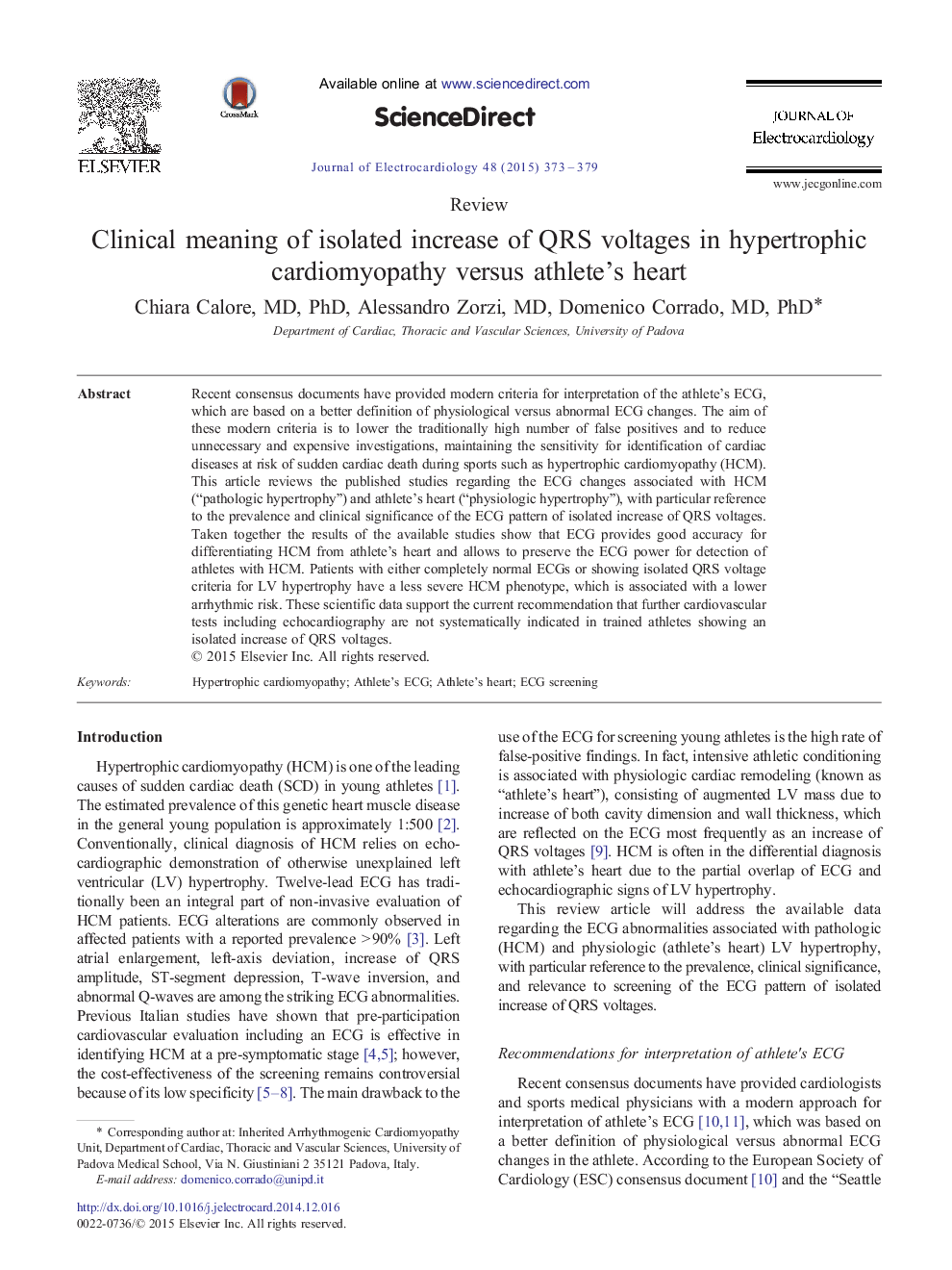| کد مقاله | کد نشریه | سال انتشار | مقاله انگلیسی | نسخه تمام متن |
|---|---|---|---|---|
| 2967586 | 1178852 | 2015 | 7 صفحه PDF | دانلود رایگان |

• Hypertrophic cardiomyopathy (HCM) is one of the leading causes of sudden cardiac death in young athletes and it is often in the differential diagnosis with athlete's heart due to the partial overlap of ECG and echocardiographic signs of left ventricular (LV) hypertrophy. ECG alterations are observed in > 90% of HCM patients and this high sensitivity accounts for the ability of ECG-based pre-participation athletic screening to identifying HCM at a pre-symptomatic stage.
• In HCM patients, voltage criteria for LV hypertrophy are often associated to other ECG abnormalities such as pathologic Q waves, left atrial enlargement, left axis deviation, ST-segment depression and T-wave inversion. On the other hand, voltage criteria for LV hypertrophy are usually found in isolation in healthy athletes. Iinterpreting as normal the ECG pattern of isolated increase of QRS amplitude in highly trained athletes leads to a substantial improvement of specificity with a negligible reduction of sensitivity for detection of HCM patients.
• ECG-phenotype studies demonstrated that HCM patients with false negative ECGs (either completely normal or showing isolated QRS voltage criteria for LV hypertrophy) have a less severe phenotype and a lower risk of sudden cardiac death.
• These scientific data support current recommendation that further cardiovascular tests including echocardiography are not systematically indicated in trained athletes showing an isolated increase of QRS voltages, unless such subjects have other non-voltage ECG abnormalities or other suspicious findings at history and physical examination. This strategy is expected to result in considerable cost savings in population-based screening programs.
Recent consensus documents have provided modern criteria for interpretation of the athlete's ECG, which are based on a better definition of physiological versus abnormal ECG changes. The aim of these modern criteria is to lower the traditionally high number of false positives and to reduce unnecessary and expensive investigations, maintaining the sensitivity for identification of cardiac diseases at risk of sudden cardiac death during sports such as hypertrophic cardiomyopathy (HCM). This article reviews the published studies regarding the ECG changes associated with HCM (“pathologic hypertrophy”) and athlete's heart (“physiologic hypertrophy”), with particular reference to the prevalence and clinical significance of the ECG pattern of isolated increase of QRS voltages. Taken together the results of the available studies show that ECG provides good accuracy for differentiating HCM from athlete's heart and allows to preserve the ECG power for detection of athletes with HCM. Patients with either completely normal ECGs or showing isolated QRS voltage criteria for LV hypertrophy have a less severe HCM phenotype, which is associated with a lower arrhythmic risk. These scientific data support the current recommendation that further cardiovascular tests including echocardiography are not systematically indicated in trained athletes showing an isolated increase of QRS voltages.
Journal: Journal of Electrocardiology - Volume 48, Issue 3, May–June 2015, Pages 373–379